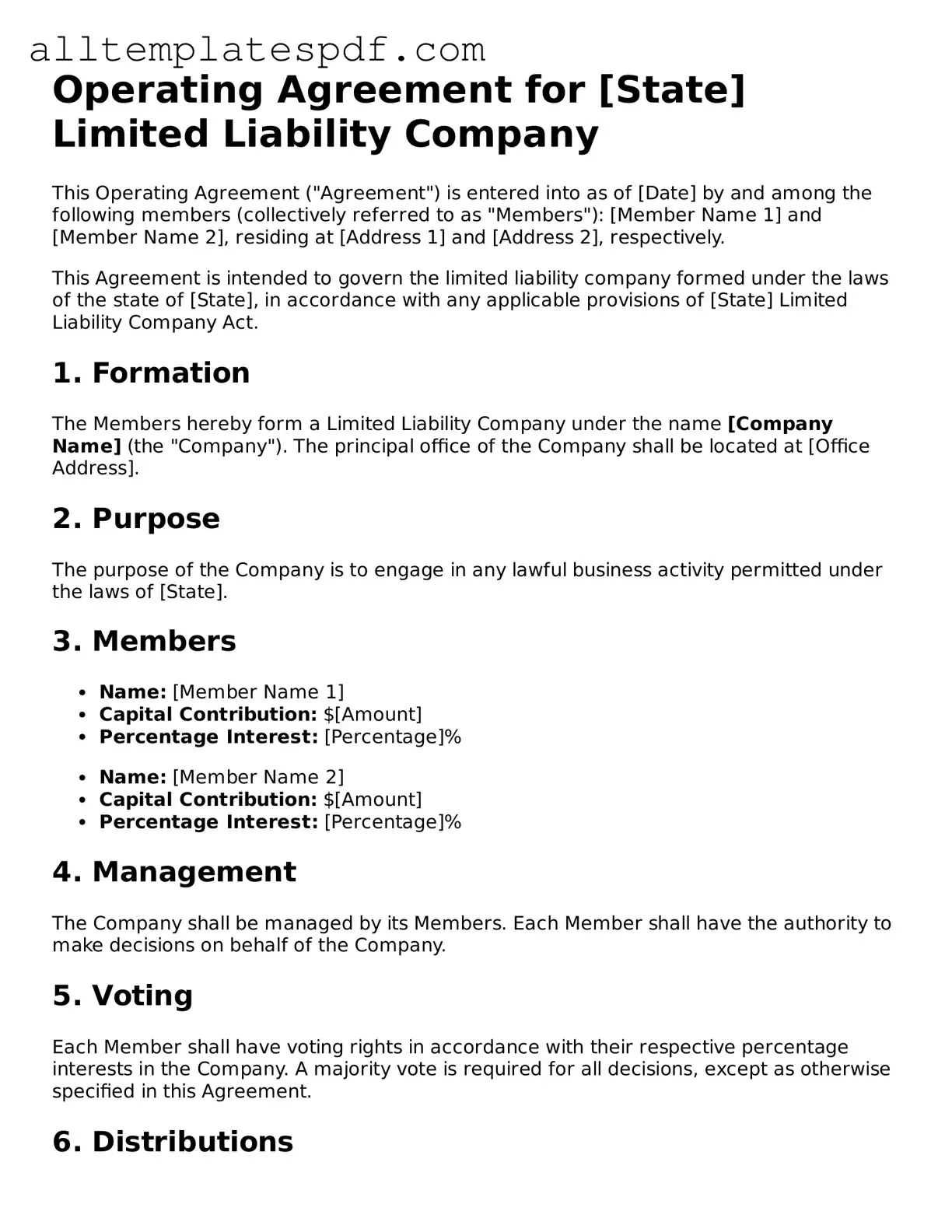Filling out an Operating Agreement form can seem straightforward, but many people make common mistakes that can lead to significant issues down the line. One frequent error is not specifying the purpose of the business clearly. An Operating Agreement should outline the nature of the business and its goals. Without this clarity, misunderstandings among members may arise, leading to conflicts.
Another common mistake is failing to detail the ownership structure. It's essential to indicate who owns what percentage of the business. Leaving this information vague can create confusion about profit distribution and decision-making authority. Clearly defined ownership helps to prevent disputes among members and ensures everyone knows their stake in the business.
Additionally, many individuals overlook the importance of defining the roles and responsibilities of each member. Each member should have a clear understanding of their duties within the company. If these roles are not explicitly stated, it can result in overlapping responsibilities or, conversely, tasks falling through the cracks.
People often neglect to include provisions for decision-making processes. An Operating Agreement should specify how decisions will be made, whether by majority vote or unanimous consent. Without these guidelines, disagreements can become contentious, leading to a breakdown in communication and teamwork.
Another mistake is not addressing the process for adding or removing members. Life circumstances change, and businesses may need to adapt. An Operating Agreement should outline how new members can join or how existing members can exit the business, ensuring a smooth transition that respects the interests of all parties involved.
Some individuals forget to include dispute resolution mechanisms. Conflicts are inevitable in any business relationship. By establishing a clear process for resolving disputes, such as mediation or arbitration, members can avoid lengthy and costly legal battles, maintaining the integrity of their business relationships.
Moreover, many people fail to review and update their Operating Agreement regularly. As businesses evolve, so do their needs. An outdated agreement can lead to complications that could have been easily avoided. Regular reviews ensure that the document remains relevant and reflects the current state of the business.
Finally, a lack of signatures can render an Operating Agreement ineffective. All members must sign the document to acknowledge their agreement to its terms. Without signatures, the agreement may not hold up in legal situations, leaving members vulnerable to disputes. Proper execution of the document is crucial for its validity.
